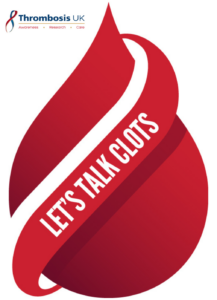 Charleigh, a mother of two children aged six and four, explained it’s hard for her to pinpoint exactly when things started to feel off. Her symptoms were vague at first, creeping up over the course of two weeks. She had experienced moments where it felt like she couldn’t quite get enough air in, as if something was stopping her from taking a full breath. It was uncomfortable but not alarming enough to raise immediate concern. Charleigh explained, she was also busy with work, preparing for a big inspection, and getting ready for a family holiday, so she thought it was just stress.
Charleigh, a mother of two children aged six and four, explained it’s hard for her to pinpoint exactly when things started to feel off. Her symptoms were vague at first, creeping up over the course of two weeks. She had experienced moments where it felt like she couldn’t quite get enough air in, as if something was stopping her from taking a full breath. It was uncomfortable but not alarming enough to raise immediate concern. Charleigh explained, she was also busy with work, preparing for a big inspection, and getting ready for a family holiday, so she thought it was just stress.
Looking back, for Charleigh, the days leading up to the holiday and throughout were a bit of a blur. She wasn’t feeling 100%, but she didn’t want to worry anyone. After all, she was going away with her family and didn’t want to spoil the fun. Still, the shortness of breath would come and go, leaving her feeling more tired than usual, a little irritable, and just not herself. But as she boarded the flight home, something changed.
Charleigh had never been an anxious flyer, but that night she started feeling increasingly uncomfortable. The pressure on her chest built, and she struggled to breathe. She tried to reassure herself, hoping it was just travel stress. But as the flight went on, it became harder to ignore. The heaviness in her chest grew stronger, and a tingling sensation spread through her body. It felt like someone was sitting on her chest, and she knew she needed help.
Trying not to alarm anyone, she attempted cold compresses and focused on a movie, but nothing helped. She glanced at the flight time, desperately counting down until she could get off the plane. To calm herself, she sang songs in her head, each one lasting around three minutes—each song getting her closer to landing.
When Charleigh finally landed, she was relieved to be off the plane, but the discomfort persisted. She struggled through the night, and the next morning, she knew she needed help. She drove herself to the doctor’s office, unsure if she should even be driving. Everything felt blurry, and she considered pulling over to call an ambulance. At the clinic, the doctor suggested it was likely a panic attack, even though Charleigh had never experienced anxiety before. She was given medication to relax and told to rest. But deep down, she knew this wasn’t the answer.
After leaving the doctor’s office, she sought urgent care, where an ECG was performed. The doctor immediately sent her back to A&E. After nearly eight hours of waiting, she was told she might have a clot on her lung. Charleigh was sent home with blood thinners and told to wait for a follow-up appointment in a few days.
The waiting was agonising. She still felt unwell and was frustrated to be left in limbo. Just as she arrived home, she received a call asking her to return for a CT scan. After more waiting and tests, the diagnosis was confirmed: pulmonary embolism. Blood clots had formed in her right lung. The relief of knowing what was wrong was tempered by the seriousness of the condition.
The following week was incredibly tough. Charleigh was sent home with blood thinners and instructed to take it easy, but the symptoms persisted. She felt tired, breathless, and scared. She couldn’t care for her children as she wanted to, and that was heartbreaking. Fear consumed her—fear of not being able to breathe and worry about something worse happening. She even started journaling, leaving messages for her family in case the worst happened.
It felt like being trapped in a horror film—isolated, struggling for air, and left to cope with a condition she knew little about. The only support came weeks later through the anticoagulant nurse, online support groups, and Thrombosis UK. The leaflet she received two weeks after discharge was the most detailed information she had been given.
Now, nearly two months on, Charleigh is feeling better, though not fully back to normal. Symptoms still come and go, and she battles anxiety, especially at night when palpitations keep her awake. It’s been a long road, but she’s taking it one step at a time. The reality is, this could have been fatal—she is grateful to be here to raise awareness for others.
Charleigh shares her story because she knows how isolating and terrifying it can be. It’s easy to feel alone, but recovery does happen, even if it’s slow. Her journey isn’t over, but she has hope. She wants others to know that even when things feel uncertain, it’s possible to get through it.
Through this experience, Charleigh has learned so much about pulmonary embolism and blood clots, things she’d never heard of before. If her story can raise awareness and help others recognize the symptoms and risks, then something good can come from it. Everyone deserves to feel safe and supported, and Charleigh’s story is a reminder that you are not alone. So many improvements can be made to raise awareness and ensure early detection—stories like Charleigh’s can make a difference.







